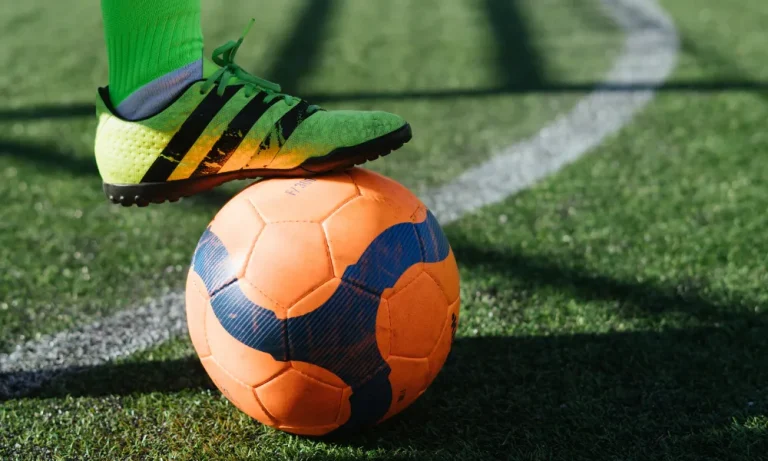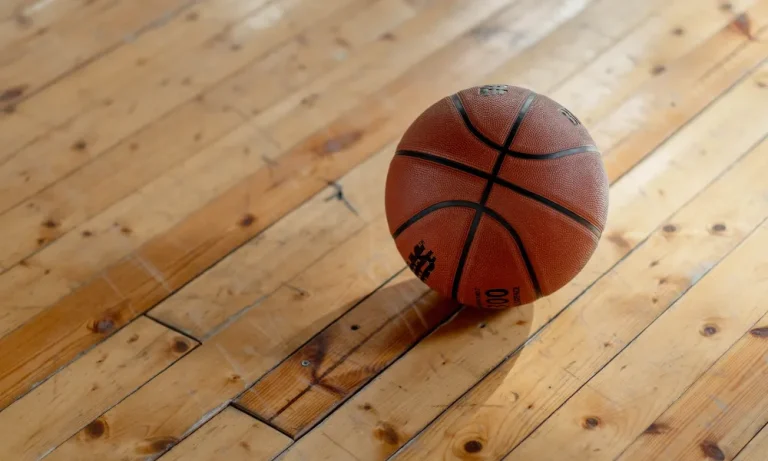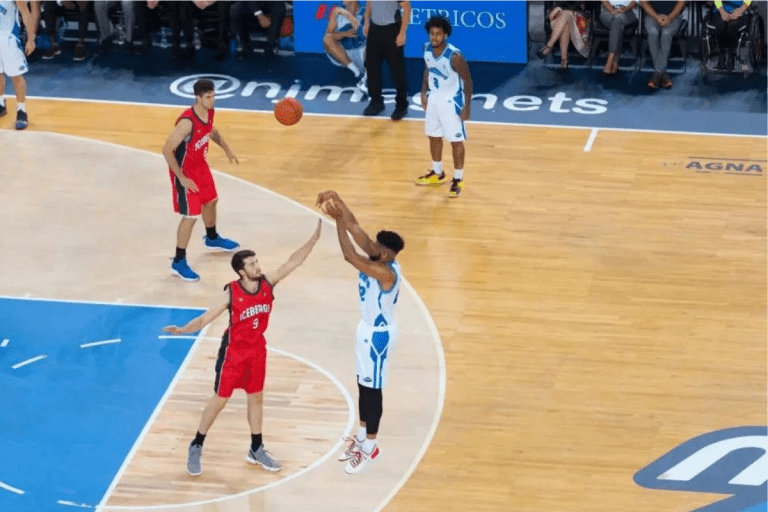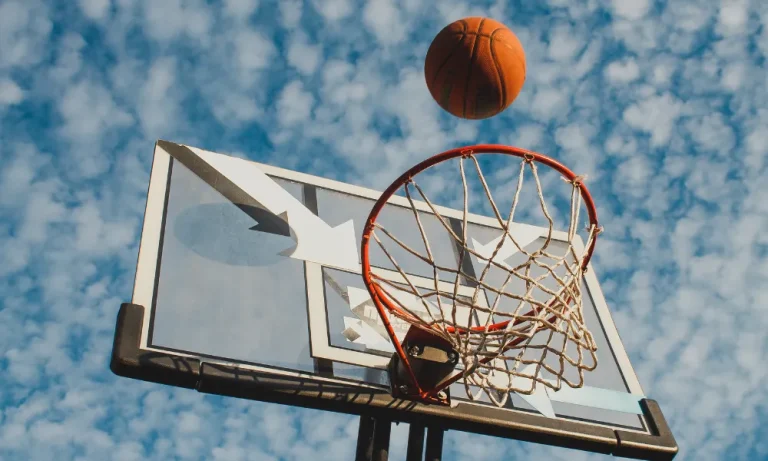Hockey vs Basketball: The Differences and Similarities
Are you torn between the thrilling action of hockey and the high-flying excitement of basketball? Look no further! In this blog post, we’ll dive deep into the world of these two beloved sports, comparing their gameplay, history, equipment, and more.
Gameplay and Rules
When it comes to sports, understanding the gameplay and rules is essential. In this section, we’ll break down the exhilarating gameplay of hockey and basketball, highlighting their unique characteristics and key differences.
Hockey: Fast-Paced Action on Ice
Hockey is a high-energy sport played on ice, where two teams compete to score goals using sticks and a puck.
The objective is simple: outscore the opposing team. Each team has six players, including a goalie, who protects the net. The game is divided into three periods, each lasting 20 minutes.
Basketball: High-Flying Hoop Action
Basketball, on the other hand, is a fast-paced game played on a court. The objective is to score points by shooting the ball through the opponent’s hoop.
Each team has five players, and the game is divided into four quarters, each lasting 12 minutes.
Scoring and Positions
In hockey, goals are scored when the puck crosses the opponent’s goal line. Each goal counts as one point. Players take on different positions, including forwards, defensemen, and goalie, each with specific roles in offense and defense.
In basketball, points are scored by shooting the ball into the opponent’s hoop. Shots inside the three-point line count as two points, while shots from beyond the line count as three.
Players are assigned positions such as guards, forwards, and centers, each with unique responsibilities on the court.
Strategies and Tactics
Hockey and basketball require different strategies to succeed. In hockey, teams focus on puck possession, passing, and strategic positioning to create scoring opportunities. Defense is crucial, with players using their sticks to block shots and disrupt the opposing team’s plays.
Basketball strategies revolve around ball movement, teamwork, and creating open shots. The offense involves intricate plays, pick-and-rolls, and dribble drives, while the defense focuses on guarding opponents, blocking shots, and stealing the ball.
Equipment and Attire
Having the right equipment and attire is crucial for performance and safety in sports. Let’s look at the equipment used in hockey and basketball and the necessary attire and safety precautions for each sport.
Hockey: Sticks, Skates, and Protective Gear
Hockey requires specific equipment to ensure players can perform at their best while staying protected on the ice. The most essential equipment is the stick, which players use to handle the puck. Skates are also vital, allowing players to glide across the ice easily.
To ensure safety, hockey players wear a range of protective gear. This includes helmets, face masks, shoulder pads, elbow pads, gloves, shin guards, and skates with reinforced toe caps. Goalies have additional specialized equipment, such as leg pads, chest protectors, and masks.
Basketball: Balls, Hoops, and Sneakers
Basketball equipment is relatively straightforward but equally important. The game’s centerpiece is the basketball, where players dribble, pass, and shoot. The hoop, mounted at a height of 10 feet, is where players aim to score points.
In terms of attire, basketball players typically wear a jersey and shorts that allow for ease of movement. They also wear comfortable, supportive sneakers to provide traction on the court and protect their feet from impact.
Attire and Safety Precautions
While both sports have different equipment requirements, they share a common emphasis on safety. Players in both hockey and basketball should wear appropriate attire and protective gear to prevent injuries.
In addition to the equipment mentioned earlier, players should also consider wearing mouthguards, athletic cups (for males), and knee pads to minimize the risk of injury. Coaches and trainers are crucial in educating athletes about safety precautions and ensuring that equipment is properly fitted and maintained.
Physical Demands and Athletic Skills
Sports require a combination of physical demands and athletic skills. This section will delve into the specific physical demands of hockey and basketball and the athletic skills necessary for success in each sport.
Hockey: Endurance, Agility, and Strength on Ice
Hockey is a physically demanding sport that requires a unique set of skills. Endurance is crucial as players skate back and forth on the ice, constantly moving and engaging in fast-paced gameplay. The ability to maintain stamina throughout the game is essential.
Agility is another key attribute in hockey. Players must be nimble and quick, maneuvering around opponents and rapidly changing directions. The ability to stop, start, and change direction swiftly is vital for success on the ice.
Strength is also essential in hockey, as players engage in physical battles and checks to gain control of the puck. Players need upper body strength to maintain balance and power when physicality is involved.
Basketball: Speed, Jumping, and Hand-Eye Coordination
Basketball is a sport that demands a different set of physical attributes. Speed is crucial as players sprint up and down the court, making fast breaks and transitions. Quickness in footwork and reaction time is essential for success on the basketball court.
Jumping ability is also vital in basketball, as players need to jump to shoot, block shots, and grab rebounds. Generating power and explosiveness in jumps can give players an advantage in offense and defense.
Hand-eye coordination is a key skill in basketball, as players need to handle the ball, pass accurately, and shoot with precision. Dribbling, passing, and shooting require excellent hand and eye coordination.
Athletic Skills for Success
Athletes must focus on developing endurance, agility, and strength to excel in hockey. This can be achieved through regular cardiovascular training, agility drills, and strength and conditioning exercises.
Global Popularity and Fan Base
Sports have the remarkable ability to transcend borders and unite people from different cultures. In this section, we will explore the global popularity of hockey and basketball, highlighting the regions where they are most prevalent. We will also delve into the dedicated fan bases and the cultural impact these sports have had.
Hockey: A Cold-Weather Favorite
Hockey is deeply rooted in regions with colder climates, such as Canada, the United States, Russia, and the Nordic countries. In Canada, hockey is more than just a sport; it’s a national obsession. The National Hockey League (NHL) has a massive following, with fans avidly supporting their favorite teams.
In Russia, hockey holds a special place in the hearts of fans. The country has produced many legendary players, contributing to the sport’s popularity. The same can be said for Nordic countries like Sweden and Finland, where hockey is a beloved winter pastime.
Basketball: A Global Phenomenon
Basketball, on the other hand, has witnessed tremendous growth in popularity worldwide. It has become a global phenomenon, with a significant following in regions like North America, Europe, Asia, and South America.
The National Basketball Association (NBA) in the United States is the pinnacle of professional basketball, attracting fans worldwide. The sport’s popularity has also soared in Europe, with countries like Spain, Greece, and Lithuania producing top-tier players.
Basketball has also experienced remarkable growth in Asia, particularly in China, where it has become a national passion. The Chinese Basketball Association (CBA) boasts a large fan base, and the country has seen a surge in homegrown talent, elevating its presence on the international stage.
Dedicated Fan Bases and Cultural Impact
Both hockey and basketball have dedicated fan bases that contribute to the cultural fabric of their respective regions. The fans’ passionate support and unwavering loyalty have made these sports more than just games.
Hockey’s fan base is known for its intense devotion, with fans filling arenas and creating an electric atmosphere. The sport’s influence can be seen in the traditions, rituals, and sense of community it fosters among fans.
Basketball, with its fast-paced, high-scoring nature, has captivated fans worldwide. The sport’s impact can be felt in urban communities, where basketball courts become gathering places for players and fans. It has also become a source of inspiration, promoting teamwork, determination, and individual skills.
Professional Leagues and Major Tournaments
Professional leagues and major tournaments play a significant role in the world of sports, showcasing the highest level of competition and attracting global attention. This section will highlight the major professional leagues in hockey and basketball and the significant tournaments and championships that captivate fans worldwide.
Hockey: The NHL Reigns Supreme
Regarding professional hockey, the National Hockey League (NHL) stands as the pinnacle of the sport. Founded in 1917, the NHL boasts United States and Canada teams. It is widely regarded as the world’s most prestigious and competitive hockey league.
The NHL season culminates in the Stanley Cup Playoffs, a thrilling tournament determining the league champion. The playoffs feature the top teams from the regular season, competing in a best-of-seven series. The Stanley Cup Final, the ultimate showdown, captures the attention of hockey fans worldwide.
Basketball: The NBA Takes Center Stage
In professional basketball, the National Basketball Association (NBA) reigns supreme. Established in 1946, the NBA has become the premier basketball league, showcasing the best talent from around the globe.
The NBA regular season is a spectacle in itself, featuring high-flying dunks, incredible individual performances, and fierce rivalries. The top teams from each conference compete in the NBA Playoffs, vying for the coveted Larry O’Brien Championship Trophy.
The basketball pinnacle, the NBA Finals, captivates fans with intense matchups and electrifying moments.
Major Tournaments and Championships
In addition to the professional leagues, hockey, and basketball feature major tournaments and championships that attract worldwide attention.
Hockey enthusiasts eagerly await the International Ice Hockey Federation (IIHF) World Championship. This annual tournament brings together national teams worldwide, competing for global supremacy. The Winter Olympics also showcase the best hockey talent internationally, with countries battling for Olympic gold.
Basketball fans eagerly anticipate the FIBA Basketball World Cup, a prestigious tournament featuring national teams from various countries. The Olympic Games, held every four years, also serve as a stage for basketball glory, with nations competing for Olympic gold medals.
Health Benefits and Risks
Engaging in sports is a source of entertainment and a means to improve physical and mental well-being. This section will explore the health benefits of playing hockey and basketball and address the potential risks and injuries that players may encounter.
Physical and Mental Health Benefits
Both hockey and basketball offer a range of physical health benefits. These sports require players to engage in intense physical activity, promoting cardiovascular fitness, strength, and endurance. Regular participation in these sports can improve overall fitness, muscle tone, and agility.
Moreover, playing hockey and basketball can have positive effects on mental health. The fast-paced nature of these sports demands quick decision-making, enhancing cognitive skills and mental agility. The teamwork and camaraderie these sports foster also improve social and emotional well-being.
Potential Risks and Injuries
While the health benefits of hockey and basketball are significant, it is important to acknowledge the potential risks and injuries associated with these sports. Both sports involve physical contact and high-impact movements, which can increase the likelihood of injuries.
In hockey, players risk injuries such as concussions, sprains, fractures, and cuts from contact with other players or equipment.
Basketball players may also experience similar injuries, including ankle sprains, knee injuries, and finger fractures, due to the game’s dynamic nature.
Players are encouraged to wear appropriate protective gear, such as helmets, mouthguards, and padding, to mitigate the risks. Additionally, proper training, warm-up exercises, and adherence to safety rules and regulations can help minimize the occurrence and severity of injuries.
Accessibility and Participation
Sports play a vital role in promoting an active lifestyle and fostering a sense of community.
Accessibility Factors: Cost, Availability, and Infrastructure
Regarding accessibility, cost, availability, and infrastructure are key factors. In hockey, the cost of equipment and ice time can be a barrier for some individuals.
However, many communities offer programs and initiatives to make the sport more accessible, such as equipment lending programs and subsidized ice time. Street hockey, which requires minimal equipment, can be a more affordable alternative.
On the other hand, basketball requires less specialized equipment and can be played in various settings, such as playgrounds, community centers, and school gyms. This makes basketball more accessible in terms of availability and cost.
Many communities have basketball courts that are open to the public, allowing individuals to participate without significant financial investment.
Infrastructure is another crucial aspect of accessibility. Hockey rinks and basketball courts must be available and well-maintained for individuals to participate.
Communities that invest in the construction and upkeep of these facilities ensure that individuals have equitable access to these sports.
Getting Involved in Hockey and Basketball
To get involved in playing hockey or basketball, individuals can explore various avenues. Local community centers, schools, and sports clubs often offer programs for beginners and enthusiasts of all ages.
These programs provide coaching, training, and opportunities to participate in leagues and competitions.
For those interested in supporting these sports, attending games and cheering for local teams can be a great way to show support.
Volunteering at community events, coaching youth teams, or joining fan clubs are excellent ways to get involved and contribute to the sport’s growth.
FAQs: Hockey vs Basketball
What are the main differences between hockey and basketball?
Hockey is played on ice with players using sticks to shoot a puck into the opponent’s net, while basketball is played on a court with players using their hands to shoot a ball into the opponent’s hoop. Hockey is a contact sport, whereas basketball is a non-contact sport.
Which sport requires more specialized equipment, hockey or basketball?
Hockey requires specialized equipment, including skates, helmets, pads, and sticks. Conversely, basketball requires minimal equipment, with players only needing proper athletic shoes and a ball.
Are there any height requirements to play hockey or basketball?
There are no strict height requirements to play either sport. However, taller individuals may have certain advantages in basketball, such as reaching the hoop more easily for shots or rebounds.
Which sport has a higher risk of injuries, hockey or basketball?
Both sports carry some risk of injuries, but hockey generally has a higher risk due to its physical nature and the potential for contact. Injuries like concussions, sprains, and fractures are more common in hockey, whereas basketball is known for injuries like ankle sprains and knee strains.
Can individuals with disabilities participate in hockey or basketball?
Yes, individuals with disabilities can participate in both hockey and basketball. There are adaptive versions of these sports, such as sled hockey for individuals with mobility impairments and wheelchair basketball for those with lower body disabilities. These adaptations allow for inclusivity and ensure that everyone can enjoy these sports.
Conclusion
Both hockey and basketball offer unique experiences and benefits. Hockey provides a thrilling, fast-paced game that strongly emphasizes physicality and teamwork. On the other hand, basketball offers a dynamic, high-scoring sport that showcases agility and skill.
Whether you prefer the ice or the court, both sports provide opportunities for physical fitness, mental growth, and a sense of community. So, lace up your skates or grab a basketball and get ready to embrace the excitement of these fantastic sports!




